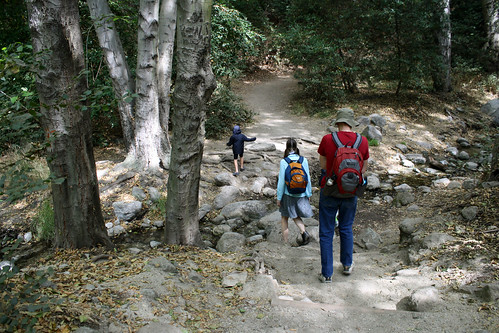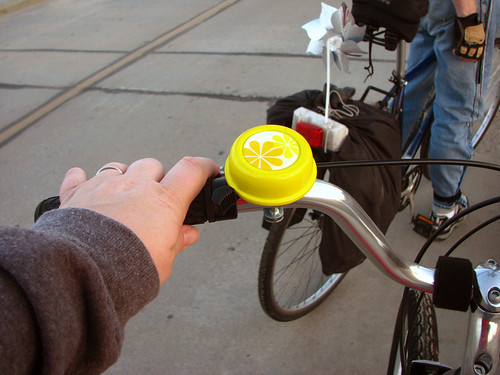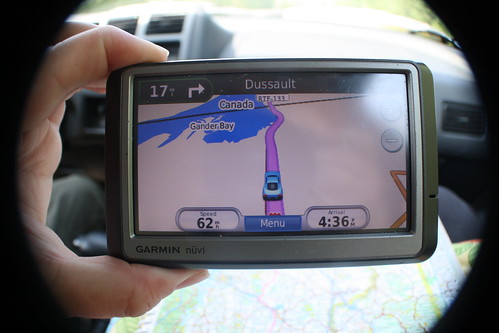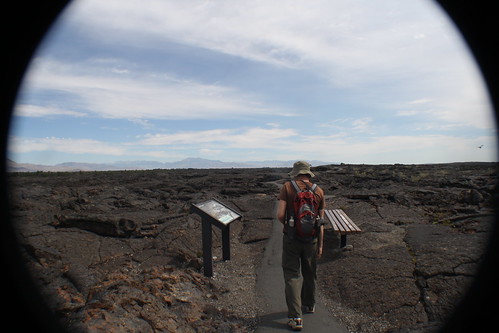
Back in August during a visit with friends in Glendale, CA we had an afternoon that called out for a hike. The Station fire last year burned most of our favorite short hikes in the West end of the San Gabriel Mountains and Angeles Crest Highway remains closed until further notice. I have not seen it in person but I hear tell the heat of the fire vaporized all the guard rails, signs, and some of the asphalt.
Monrovia Canyon Park is far enough East to be out of the burn area and it offered one of the few San Gabriel foothill hikes within a short drive of Glendale that was still open.

There is a per car fee of $5 and maps available at the entrance to the park. The map will guide you to one of several parking areas depending on what trail or picnic area you wish to visit. With kids in tow we chose the short 3/4 mile walk to Monrovia Fall(s). This is a popular trail with dog walkers so expect company particularly on pleasant weekend afternoons. The trail winds up the canyon crossing the creek several times. Some tip-toe rock balancing is required to cross the water but the rest of the trail is well maintained and an easy grade.

There's the magic adventure bag, the ever present companion. Restroom facilities are available near the parking area but none up the trail so don't forget your pee style ladies.

At the end of the trail you'll find at least a smidgen of a waterfall even in the summer. If you make the trek after a good rain (yes, they come once in a while in LA) the waterfall will be more impressive and the creek crossings more harrowing. Beware, if you hike on a day that threatens imminent rainfall, the canyons of the San Gabriel Mountains are notorious for flash floods and debris flows of mud, rocks, and trees.
All said, we had a pleasant short hike that kept the kids busy enough poking in the water. After a lunch snack near the small waterfall we headed back downstream. If you go, keep an eye out for the peculiar glazed ceramic trail markers.

We never figured what the numbers indicated. Maybe you can sleuth it out.







































